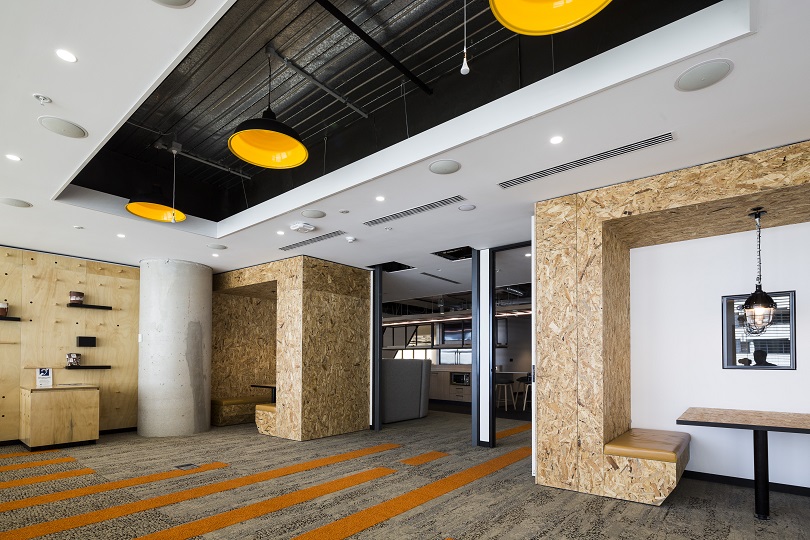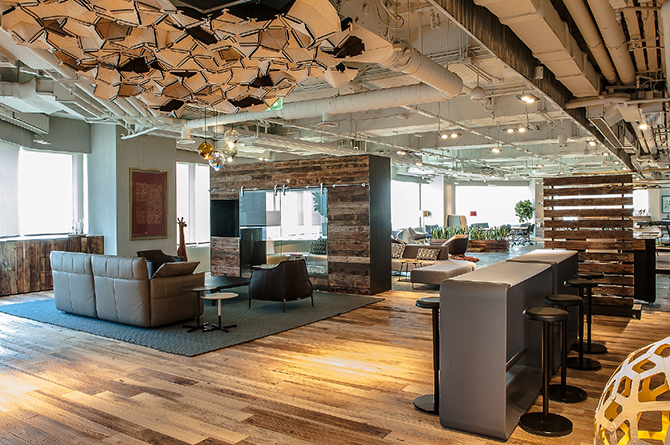With 60% of organisations across Asia Pacific either running, or intending to introduce workplace wellness programs it is clear that health and wellness are affecting property decisions.
A new CBRE Viewpoint, Wellness in the Asia Pacific workplace, highlights the growing number of companies that are investing in physical infrastructure and wellness programs to enhance employees’ health and wellbeing as demographic, social and technological developments continue to change the workplace regionally.
According to CBRE’s 2016 Asia pacific Occupier Survey, 30% of office occupiers in Asia Pacific currently run wellness programs, while a further 30% indicated a strong desire to introduce one in the near future.
Further highlighting the shifting focus towards creating healthier buildings has been the rise of companies registering for the International WELL Building Institute’s (IWBI) WELL Building Standard™.

Sydney’s Mirvac Headquarters Building has ‘Hatch’ areas to brainstorm new ideas.
As of July 2017, a total of 146 projects in Asia Pacific had registered for the Well Building Standard, with two-thirds located in China, and Australia being the second largest market, with most projects registered in Sydney and Melbourne.
CBRE’s Pacific Head of Sustainability Emma McMahon said companies were taking a much greater people-centric approach to sustainability - as highlighted from the level of interest in WELL registered projects in the Australian market.
“With up to 90% of businesses costs associated with its people, realising the untapped potential of optimsiing and preserving the value of their greatest asset, to increase productivity, attraction of top talent and improved levels of engagement,” Ms McMahon said.
“Health and wellbeing forms much of this conversation - with organisations looking at strategies to provide better nutrition options, bespoke wellness facilities such as mediatiation rooms and yoga/pilates classes, or more practical solutions such as better air quality or sophisticated lighting solutions.”
Of the nearly 500 registerd WELL projects globally, only 34 have obtained certification, including three projects in Asia Pacific - Sydney’s Mirvac Headquarters Building, the Haworth Shanghai Headquarters building and GTB Shanghai.

Haworth's new Organic Space in the Jing’An Kerry Centre of Shanghai is one of the first WELL-certified facilities to be built in Asia Pacific.
A major challenge to qualifying for the WELL Building Standard in Asia Pacific is mitigating air pollution, especially in China and India. In Australia and New Zealand, air quality is far less of a concern, with providing more healthy food and exercise options the key priorities. Elsewhere, in Japan and South Korea, workplace stress is more of a concern than in other markets.
The report shows working hours across Asia outpace much of the world, with Hong Kong boasting the longest average work week of 50.1 hours. By comparison, Sydneysiders work one of the shortest weeks at 35.2 hours, while New Zealanders an average 38.3 hours at the office each week.
New Zealand and Australia also have the second highest overweight populations, with 64% of people boasting a BMI greater than 25. The US has the highest proportion at 68%, whereas the closest Asian nation, Maylasia, has almost half that figure at just 38%.
Source: CBRE
Similar to this:
Singapore Property Market Setting Sail for Recovery
Reside in Singapore's tallest building
Singapore’s luxury property market reports record sales










